Compelling visual imagery is key to effectively communicating climate change. Far from clichéd pictures of polar bears and smoke stacks, the topics in the Special Report on 1.5C (SR15) tell a more human and urgent story. The WGI Technical Support Unit collaborated with Climate Outreach to curate a photo library to illustrate the SR15. The 25 photos that you see on this page are drawn from the Climate Visuals project (www.climatevisuals.org), research undertaken by Climate Outreach and partners to create a more diverse, compelling and evidence-based visual language for communicating climate change.
Based on international social science research 1,2, the Climate Visuals project builds on seven core principles for effective visual communication, highlighting the importance of showing ‘real’ people and telling stories that matter to communities across the world.
For each of the 5 chapters, up to 6 photos were selected according to the Climate Visuals evidence-based principles. Every image focuses on a relatable human story and seen together as a whole, they illustrate key themes of the chapters.
These images have been widely used in IPCC communication materials, including the media launch and high-level international outreach activities.
All images in the SR15 photo library are the property of Aurora PhotoCenter. For all usage and licensing requests, please address all inquiries to Aurora PhotoCenter. The IPCC cannot provide authorization for use of these images.
1. Chapman, A., Corner, A., Webster, R. and Markowitz E. (2016): Climate visuals: A mixed methods investigation of public perceptions of climate images in three countries, Global Environmental Change. 41, pp.172-182
2. Wang, S., Corner, A., Chapman, A., Markowitz, E. (2018): Public engagement with climate imagery in a changing digital landscape, Wires Climate Change
Framing and context
The scientific basis
 A study monitoring C02 exchange between the atmosphere and the soil, South-West Pacific.
A study monitoring C02 exchange between the atmosphere and the soil, South-West Pacific.
Description
Showing the human face behind the climate science rather than showing technology on its own is an essential component for effectively engaging public audiences.
© Ashley Cooper / Aurora Photos
Cities and communities
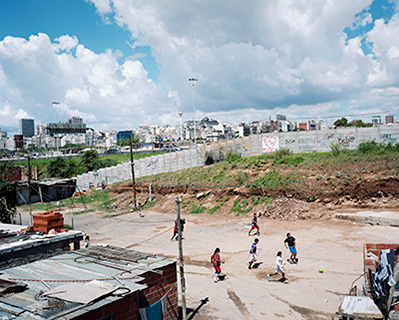 A game of football is played on the streets, South America.
A game of football is played on the streets, South America.
Description
Relating climate change to people’s daily lives means building a visual vocabulary that goes further than melting ice and wind turbines. Images like this one help situate climate change as something familiar, rather than a distant and remote phenomenon.
© Andrew Querner/ Aurora Photos
Agriculture
 Farmer preparing the soil before planting, Central and North America.
Farmer preparing the soil before planting, Central and North America.
Description
Images that help make this connection in the public mind play a role in making this goal a reality, and research suggests that ‘showing by doing’ is an effective visual message for public
audiences.
© Peter Essick / Aurora Photos
Transportation networks
 Road junction with traffic at night, Asia.
Road junction with traffic at night, Asia.
Description
Images like this help to locate the IPCC’s findings in a context recognisable to many millions of people around the world, and show topics related to climate change at a scale that research suggests is an effective way of engaging viewers.
© Gerhard Zwerger-Schoner / Aurora Photos
Mitigation pathways
Global economy
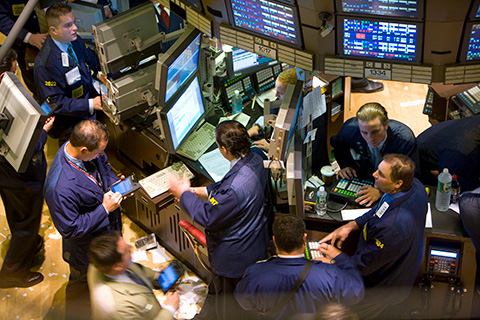 Traders on the floor of Stock Exchange, Central and North America.
Traders on the floor of Stock Exchange, Central and North America.
Description
Research shows the importance of providing new visual stories for climate change beyond landscapes and the environment, and beyond images related to energy technologies with no people in sight.
© Jim Lo Scalzo / Aurora Photos
Food systems

Viewing a market from above, Asia
Description
Research has found that showing direct links between
climate change and day-to-day issues helps climate change to be understood and perceived as being part of the tapestry of
human life, not separate from it.
© Neil Emmerson / Aurora Photos
Land-use planning
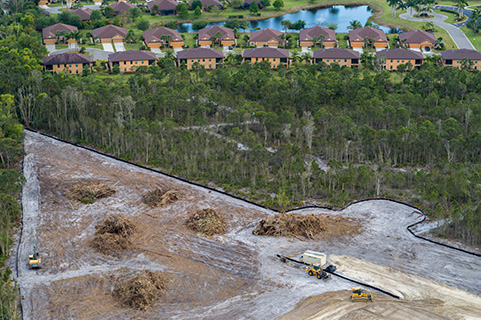 Aerial views on construction site and new houses, Central and North America
Aerial views on construction site and new houses, Central and North America
Description
Research has found that showing causes of climate change on a large, industrial scale is more effective at engaging public audiences than through images of individuals’ behaviours, showing, for example, someone driving or eating a meat-based meal.
© Peter Essick / Aurora Photos
Low-carbon transportation systems
 Crowd of people moving into a train, South America
Crowd of people moving into a train, South America
Description
Research has found that images showing low-carbon behaviours as part of everyday life are well received by a non-specialist audience.
© Vitor Marigo / Aurora Photos
Impacts
Sea level rise
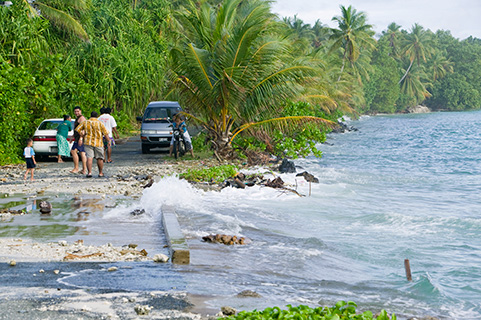 Residents watch as the high tide floods their island homes, South-West Pacific.
Residents watch as the high tide floods their island homes, South-West Pacific.
Description
This image includes recognisable people, being impacted locally. Research suggests making this link as tangibly as possible is crucial for engaging audiences and situating climate change in the ‘here and now’.
© Ashley Cooper / Aurora Photos
Preserving trees
 Two individuals taking measurements from a tree, Asia.
Two individuals taking measurements from a tree, Asia.
Description
Research suggests that showing ‘experts at work’ brings a human face to climate science and this is an effective way to convey the science of climate change that may otherwise seem opaque or intangible.
© Bridget Besaw / Aurora Photos
Terrestrial and marine ecosystems
 Split image of pristine coral reef and island, South-West Pacific
Split image of pristine coral reef and island, South-West Pacific
Description
Research has found that the presence of an identifiable individual in an image related to climate image encourages viewers to make the ‘human connection’ to the scene portrayed in the image.
© Andre Seale / Aurora Photos
Polar regions
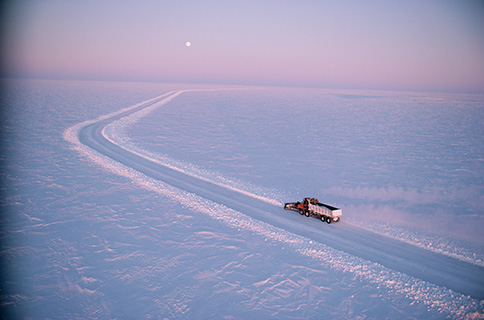 A truck plowing snow to widen road in early moonlight, Central and North America.
A truck plowing snow to widen road in early moonlight, Central and North America.
Description
Research has found that images making a direct human connection – even in remote, icey snowscapes – are more effective in engaging the viewer’s attention than when a human subject was absent.
© James Balog / Aurora Photos
Heatwaves
 The window of a bus in the heat of summer, Central and North America
The window of a bus in the heat of summer, Central and North America
Description
Research has shown that images that show the challenges of heat, rather than people crowding on to beaches or playing in city-centre fountains – help tell a powerful human story about climate change.
© Jason Florio / Aurora Photos
Drought
 Low water levels of a lake during a historic drought, Central and North America
Low water levels of a lake during a historic drought, Central and North America
Description
Research has found that telling ‘local’ visual stories is an important component for effective engagement – showing real people, in a range of regional contexts, being affected by and responding to climate change.
© Peter Essick / Aurora
Strengthening the global response
Behavioural changes in everyday’s life
 Commuters ride a subway car during a holiday, Asia
Commuters ride a subway car during a holiday, Asia
Description
Research has found that images of ‘ordinary people’ doing ‘ordinary things’ in images to represent low-carbon choices were preferred over images that showed people posing for the camera, or that appeared staged.
© Tim Martin / Aurora Photos
Agricultural practices
 Seedlings are being prepared to transplant into empty water channels, Central and North America
Seedlings are being prepared to transplant into empty water channels, Central and North America
Description
Research has found that images of people engaging in positive, proactive activities as a response to climate change were preferred over images that showed people posing for the camera, and will likely generate a positive emotional response.
© Kerry Sherck / Aurora Photos
Energy supply
 A ranger cleans the solar panels that power a ranger camp, South-West Pacific
A ranger cleans the solar panels that power a ranger camp, South-West Pacific
Description
Research has found that images of renewable energy that show ‘real people’ benefiting from, or interacting with climate solutions like this are powerful communications tools.
© Ted Wood / Aurora Photos
Sustainable cities
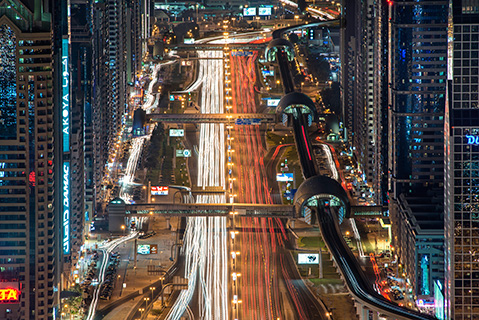 Aerial view of an illuminated highway, Asia.
Aerial view of an illuminated highway, Asia.
Description
Research has found that providing new visual stories to engage beyond images typically associated with climate change is crucial. The connection between climate change and cities is not regularly made in imagery.
© Mint Images / Aurora Photos
Food production
 Seaweed farm, Asia
Seaweed farm, Asia
Description
Research has found that showing ordinary, relatable human subjects in images, proactively demonstrating low-carbon activities, is more effective for engaging public audiences than images where people were absent.
© Konstantin Trubavin / Aurora Photos
Energy transition
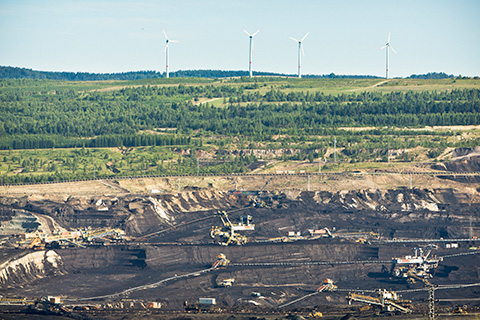 A coal mine with wind turbines in the background, Europe.
A coal mine with wind turbines in the background, Europe.
Description
Research suggests that when people are confronted with activities related to climate change on a large scale – such as this coal mine – they are more likely to engage with the issue than showing individual-level behaviours (e.g. a family driving a car or one person burning coal).
© Robert van Waarden / Aurora Photos
Sustainable development, poverty eradication, and reducing inequalities
Urban farming
 An elderly woman waters her urban vegetable garden, Asia.
An elderly woman waters her urban vegetable garden, Asia.
Description
Research suggests that showing people proactively engaging with ways of building resilience to climate change, is likely to produce a positive emotional reaction among viewers: showing by doing. The buildings in the background also add a ‘contrast’ the green vegetable garden – something which is likely to draw the viewer in.
© Natalie Behring / Aurora Photos
Vulnerable communities
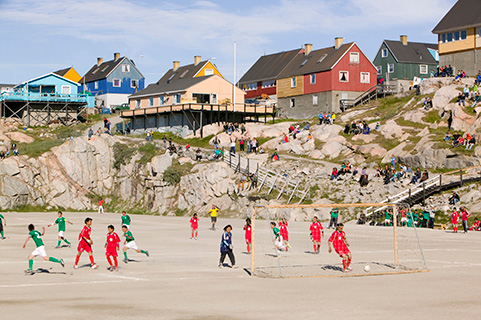 A football match in a polar region, Europe
A football match in a polar region, Europe
Description
Research has found that viewers are engaged not only by images that directly show climate causes, impacts and solutions, but have an appetite for new visual stories that show ‘how we will live’ in towns, villages and cities around the world, in the context of a changing climate.
© Ashley Cooper / Aurora Photos
Towards sustainable solutions
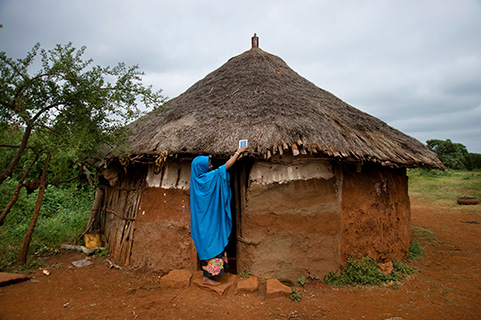 A woman placing the portable solar panel she uses to recharge her mobile phone and lamp on the roof of her cabin, Africa.
A woman placing the portable solar panel she uses to recharge her mobile phone and lamp on the roof of her cabin, Africa.
Description
Research has found that images like this -with an identifiable individual, tangibly benefiting from a renewable energy technology are more engaging than a people-free image of renewable energy technology.
© Alessandro Gandolfi / Aurora Photos
Poverty eradication
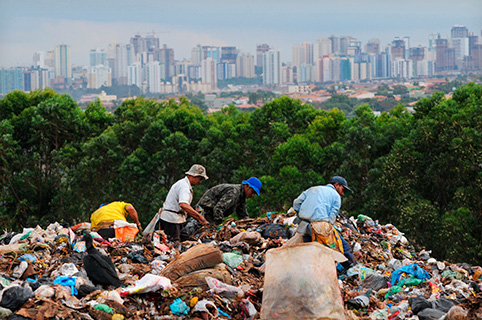 Garbage collection area where 3,000 people collect garbage for recycling 24 hours a day, South America
Garbage collection area where 3,000 people collect garbage for recycling 24 hours a day, South America
Description
Research has found that images showing a direct link to human subjects engage more effectively with a general public audience. The city in the background provides a further human link to the story of waste shown in the foreground.
© Christian Tragni / Aurora Photos
Extra
Carbon mitigation
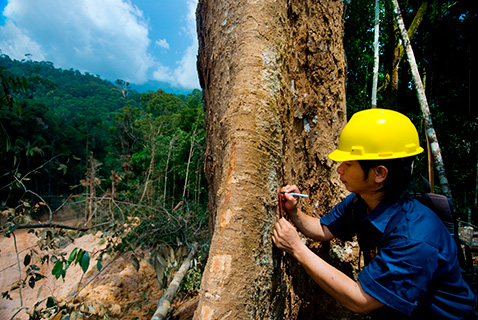 Forest planner placing red and yellow tags on trees that should not be cut because they are part of a carbon sequestration research project, Asia
Forest planner placing red and yellow tags on trees that should not be cut because they are part of a carbon sequestration research project, Asia
Description
Research has found that people are more engaged by images of ‘people at work’ (including scientists) than by static images of people standing. Telling the human story of climate change means showing the human face of climate science.
© Bridget Besaw / Aurora Photos